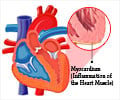New study has uncovered that minerals causing aortic heart valve blockage in men and women are different, a discovery that can change how heart disease is diagnosed and treated.

Their findings show considerable differences in the mineral deposits found in aortic valves of men and women who suffer from stenosis, a life-threatening heart condition caused by a narrowing of the aortic valve opening.
"What we showed, which was a surprise to us, is that the type of minerals in the heart valves is different between the sexes," said Cerruti. "We unexpectedly found that the minerals are different in composition and shape and that they grow slower in women."
Mineral composition analysis performed at the Soft X-Ray Mischaracterization Beamline, which is housed within the CLS, also determined that a type of mineral deposit was found almost exclusively in samples from female patients.
Taking diversity into consideration
Cerruti says that her findings demonstrate the importance of thinking about diversity in the context of research, a concept that has historically been a blind spot for the scientific community. For example, using only male mice in experiments used to be a standard practice.
Advertisement
With 280,000 heart valves being replaced every year in Canada due to stenosis, Cerruti says her work demonstrates the need to develop different diagnostic and therapeutic approaches when treating aortic stenosis in men or women.
Advertisement
Source-Eurekalert















